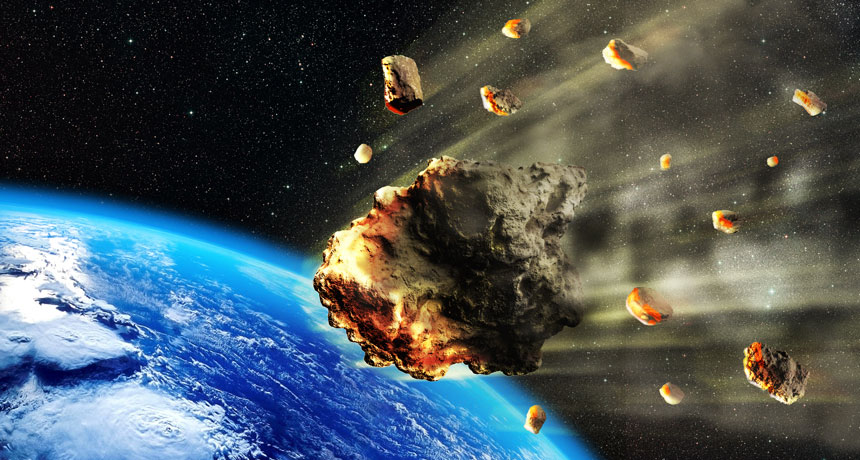Asteroids could have delivered water to the early Earth

Shooting small rocks from a high-speed cannon showed that some asteroids could have brought water to the early Earth — without all the water boiling away on impact, a new study finds.
“We can’t bring an asteroid to Earth and crash it into the Earth, bad things would happen,” says planetary geologist R. Terik Daly, who did the research while a graduate student at Brown University in Providence, R.I. “So we went into the lab and tried to re-create the event as best we can.”
After the solar system formed about 4.6 billion years ago, Earth grew up relatively close to the sun, where it was too hot for water to condense out of the gas phase. And Earth was too small to hold on to much nearby gas anyway. So scientists think the pale blue dot may have received its water from somewhere else — although exactly how that happened is still up for debate (SN: 5/16/15, p. 18).
Daly, now at Johns Hopkins University, and Brown planetary scientist Peter Schultz made marble-sized pellets of antigorite, a mineral found in Japan that is similar to the kinds of rocks that may have brought water to Earth billions of years ago. To simulate a dry planetary surface, the team baked pumice at 850° Celsius for 90 minutes. Then the team shot the pellets at the pumice at about 5 kilometers per second using the NASA Ames Vertical Gun Range in California.
That speed is similar to those at which asteroids probably crashed into each other when the planets were forming, Daly says. Previous simulations suggested that all of an asteroid’s water would vaporize upon impact if the asteroid had been traveling faster than 3.1 kilometers per second. On a planet like the early Earth, which lacked an atmosphere, that water vapor would then have been lost to space.
But Daly and Schultz found that some of the water vapor released by the pellets’ impacts was captured within glass created from shocked rock, or conglomerates of “busted-up” rocks called breccias. Asteroids could have delivered up to 30 percent of their stored water to growing planets, the scientists conclude April 25 in Science Advances.
The next step is working out how the water could escape from rocks to create oceans and other water bodies, Daly says.
“I really like this work,” says planetary scientist Yang Liu of NASA’s Jet Propulsion Laboratory in Pasadena, Calif., who was not involved in the study. “The experimental setup is very clever.”
Liu studies water in lunar material, and one frequent question about her work is how the moon can have water at all (SN: 10/24/09, p. 10). Earth’s nearest celestial neighbor lacks a thick atmosphere where vapor can accumulate, which means the moon should have had an even harder time keeping impact-delivered water than the Earth did.
“This work demonstrates that this is feasible even for airless bodies,” she says. The finding even suggests a way for future crewed missions to find water on the moon: “Perhaps we should just look for impact melts to get the water we need.”